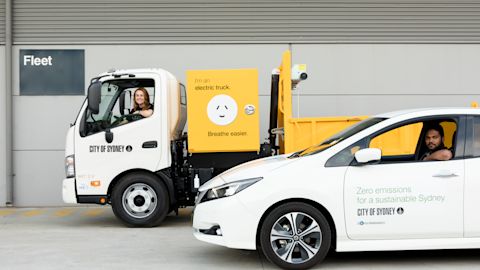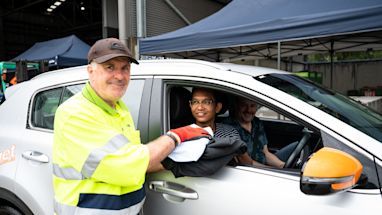Our vision is for net zero emissions across our local area by 2035. Transport accounts for around 20% of total emissions in our area and a shift to electric vehicles is an important part of our goal to hit net zero.
Our draft electrification of transport in the city strategy and action plan supports electric vehicles, while protecting enjoyment of our streets, and recognising that walking, cycling and public transport are the best ways to reduce transport emissions.
Here are 5 of the key actions we’re taking. You can read the full strategy document and have your say until 4 April 2023.

Showing leadership
We’ve electrified much of our fleet, with 19 fully electric cars and 73 hybrid cars. An increasing number of our cleansing and maintenance vehicles are electric, including one fully electric truck, and 2 waste bin collection vehicles.

Advocacy
The biggest barriers to private electric vehicle ownership are price and availability. We’ll continue advocate for state and federal governments to reduce the costs of electric vehicles in Australia.
The electrification of fleet vehicles, including buses, taxis and ride share vehicles, will play a large role in reducing transport emissions. We will advocate for the NSW Government to speed up the electrification of public transport and push for better fuel efficiency standards.

Supporting strata
75% of our residents live in apartments. We’ll use our planning controls to make sure that all new developments are electric vehicle ready.
Over the coming months we’ll also look at ways existing buildings and strata schemes can retrofit equipment to allow charging when more residents own or share electric vehicles.
On-street charging
We’re taking a sensible approach to on-street charging, starting with a proof-of-concept trial at a site in Glebe.
While on-street charging will play a role, it’s not currently a major barrier to electric vehicle ownership growth. On-street charging shouldn’t come at the expense of the public’s enjoyment of their streets.
Car ownership is low across our local area, with 63% of households owning a car. As electric battery technology continues to improve, charging will need to happen less often, reducing the need for on-street charging.
Our research tells us that most people will charge their vehicles at home, work or a fast-charging service station. It’s estimated that 300 publicly accessible chargers will be enough to meet demand across our local area in 2035. We’ll work with providers to get more chargers where they’re needed at some on-street locations, balancing the need to protect our footpaths and public spaces.

Increasing off-street public charging
Our area already has more than 100 publicly available charging points and we’re doubling charging capacity in City of Sydney off-street car parks.
We’ll to boost charging capacity in our Goulburn Street and Kings Cross car parks to 18 plug in points with another 2 22kWh chargers to be installed in Cope Street car park in Redfern and Wilson Street car park in Newtown (pending feasibility).
We expect the private sector will also play a strong role in off-street charging, including shopping centre car parks and as service stations convert their operations to electric vehicle charging.
You’re invited to view and have your say on our draft strategy until 4 April 2023.
Published 21 February 2023



